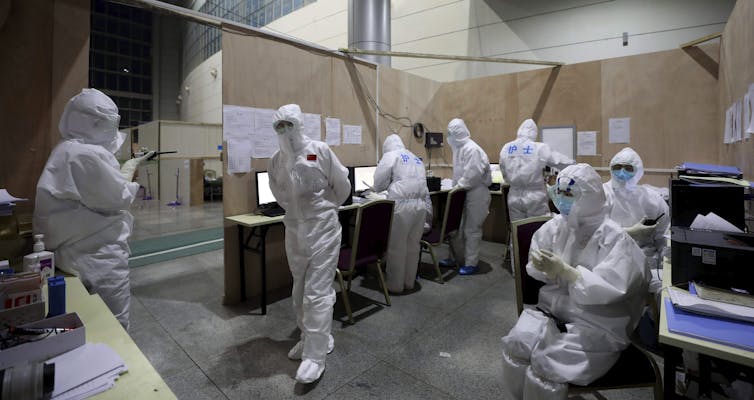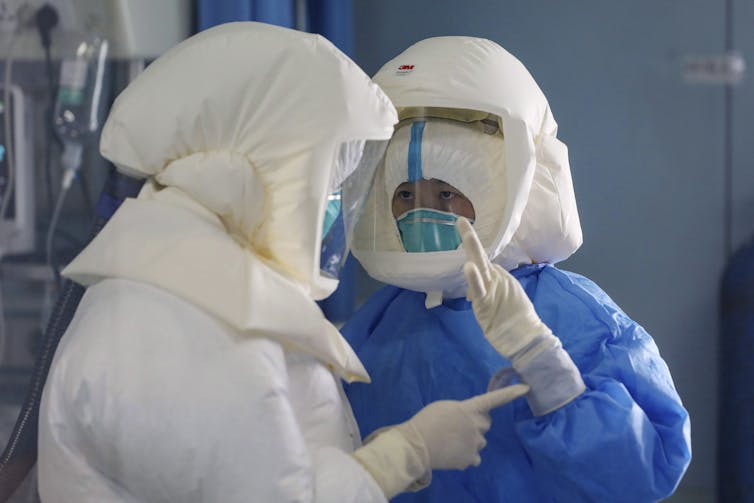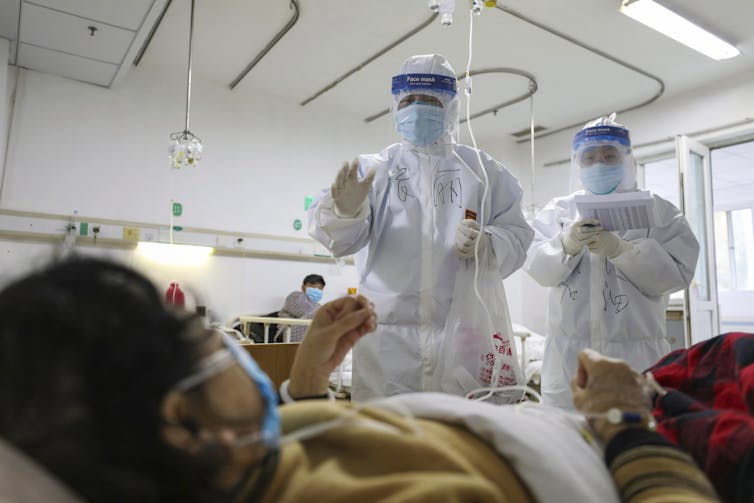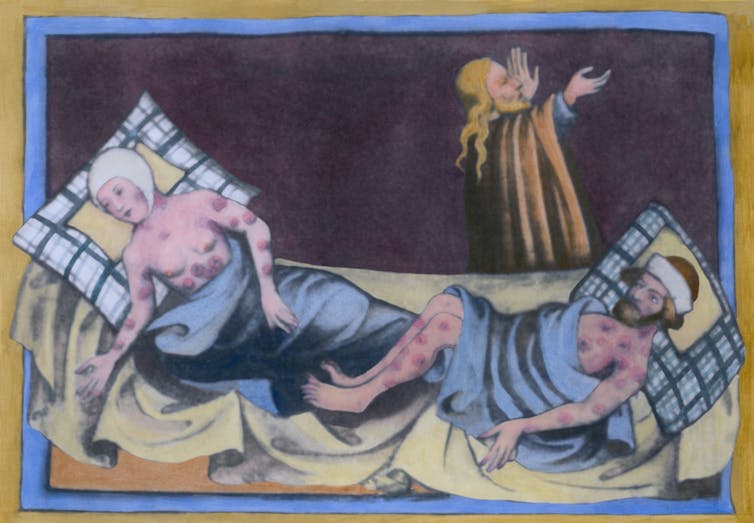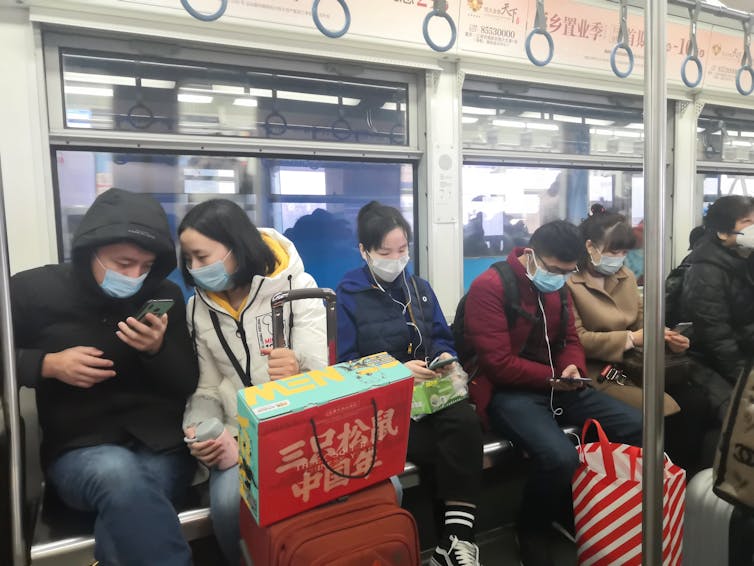Можем ли мы узнать из истории о том, как
распространяются болезни и как мы на них реагируем?
History Today | Published in History Today Volume 70 Issue 4 April 2020
«Выносите своих мертвецов»: улица во
время Великой чумы в Лондоне, 1665 год, с телегой смерти и скорбящими.
Wellcome Collection.
«Стратегии
борьбы с чумой сформировали основу для дальнейшей политики»
Джон Хендерсон (John Henderson), профессор истории итальянского ренессанса в Биркбеке, Лондонский университет и автор Florence Under Siege: Surviving
Plague in an Early Modern City (Yale, 2019)
Новости о
распространении и реакции на коронавирус перемежают нашу повседневную жизнь,
попеременно создавая страх и уверенность, поскольку социальные сети вызывают
чувство паники, в то время как официальная линия подчеркивает, что эпидемия
находится под контролем.
Но фразы и
темы, которые характеризуют официальные заявления, не являются чем-то новым;
они говорят о многовековых реакциях на эпидемии, ни одна из которых не является
более яркой, чем чума. Действительно, стратегии борьбы с чумой в
доиндустриальной Европе сформировали основу для последующей политики и нашли
отражение в текущих инициативах общественного здравоохранения.
Политика
«сдерживания», «смягчения последствий» и «карантина» не являются чем-то новым.
По иронии судьбы, учитывая нынешнюю распространенность коронавируса в северной
и центральной Италии, именно здесь во время Ренессанса впервые были разработаны
некоторые из основных стратегий общественного здравоохранения. Санитарный
кордон, укомплектованный солдатами вдоль границ, чтобы предотвратить
проникновение чумы в государства, негативно сказался на экономике, поскольку
были введены эмбарго на промышленность, торговлю и торговлю. Города, возможно,
лучше защищенные, чем сейчас их средневековыми стенами, нанимали охрану, чтобы
бросить вызов любому, кто пытается войти.
Улицы дезинфицировались
горящими ветвями можжевельника, а «зараженные» дома, мебель и постельные
принадлежности были очищены с помощью серы. Врачи, одетые в маски, ходили по
улицам, так же, как сегодня медицинский персонал носит маски. Затем, как и
сейчас, выражалась обеспокоенность в отношении людей, собирающихся вместе;
общественные мероприятия были запрещены, а школы и рынки закрыты. Больных
доставляли в обширные карантинные центры - «Лазаретти» - в течение 40 дней их
изолировали дома или в крупных учреждениях за пределами городских стен.
В этих
стратегиях подчеркивалась роль правительств в сдерживании и смягчении
последствий, одновременно пытаясь избежать возникновения паники и страха. Хотя
это было еще до появления социальных сетей, ходили слухи, и маргинализированные
слои общества обвинялись в распространении этой болезни, как следствие
возникали вопросы о влиянии официальной политики на свободу человека.
«Эпидемии
поражают извне и проникают внутрь»
Сэмюэль Кон (Samuel Cohn), профессор
средневековой истории, Университет Глазго и автор книги «Эпидемии: ненависть и
сострадание от чумы Афин до СПИДа» (Оксфорд, 2018)
Я сконцентрируюсь
на одном аспекте эпидемий, на самом деле наиболее часто сообщаемом в исторических
источниках от древности до 19-го века - человеческие реакции. По крайней мере,
с начала 1980-х годов и в связи с ВИЧ / СПИДом возникли реакции, почти
исключительно связанными с эпидемиями во все времена - подозрение, обвинение и
насилие в отношении бедных, «других» и жертв болезней. Это легко объяснить.
Эпидемии часто приходят извне, их приносят иностранцы, и они воспринимаются как
результат бедности и загрязнения окружающей среды. Несмотря на это,
разновидности ненависти и насилия более разнообразны, чем обычно считается.
Гнев и
насилие распространялись чаще в противоположном направлении, от бедных к
государству, особенно когда элиты вводили жестокие формы карантина и военные
обыски в отношении тех, кто воспринимался как инкубатор болезней - бедных - как
при бубонной чуме в конце 19-го век на индийском субконтиненте. Бедные были
загнаны в лагеря с нечеловеческими условиями, что привело к массовым
беспорядкам и ненависти людей к колониальной элите и муниципальным органам
власти. Линии ненависти могут распространяться и в других направлениях, как,
например, холерные бунты с 1830-х годов
до 20-го века. Бедняки были виновниками насилия, но медицинские работники стали
главными жертвами, обвиняемыми в изобретении этой болезни, чтобы уничтожить
бедное население.
История,
однако, показывает, что эти насильственные реакции были исключениями, особенно
до 19-го века. Эпидемии могут вместо этого положить конец классовой борьбе -
как между сенаторскими элитами и плебеями в Риме пятого века. Они также могут порождать сострадание, как возникновение массового
добровольчества и самопожертвования по всему миру во времена Великого Гриппа в
1918-20 годах.
’
Возникает
вопрос: в чем различия? За последние 200 лет наиболее заметной является одна
переменная: показатель летальности (доля заболевших, которые умерли), а не
смертность. И во времена холеры в 1830-х годах и при Эболе сегодня нападения на
работников здравоохранения и государства повторяют один лозунг: «Люди попадают
в больницы, но не выходят оттуда живыми».
‘ «Страх и подозрение распространяются
быстрее, чем любой вирус»
Patricia Fara, Former President of the British Society for the History
of Science and Emeritus Fellow of Clare College, Cambridge
EЭпидемии порождают страх и подозрения, которые
размножаются быстрее, чем любой вирус. Когда возникает загадочная болезнь,
первая бесполезная реакция - паника, вторая - выявить виновника. Вместо того,
чтобы искать решение проблемы, обвинение в предполагаемых источниках выявляет
существовавшие ранее ошибки в обществе. В начале 1980-х годов, когда причина
СПИДа была еще неизвестна, американская пресса обвинила африканцев в сексе с
шимпанзе, в то время как советские агенты обнаружили его происхождение в
исследовательских лабораториях США. Но по мере того, как гомофобия усиливалась
на международном уровне, самая яростная ненависть была направлена против
«Пациента Ноль», бортпроводника-гея, которого неоправданно назвали источником
напасти.
В 1665
году, во время самого печально известного бактериального нашествия на Англию,
главным подозреваемым был Бог. Не имея других объяснений, толпы людей стекались
в церкви, молясь об избавлении от того, что они истолковали как божественное
возмездие за свои грехи. В своем романе «Журнал чумного года» Даниэль Дефо
описал растущий хаос, поскольку
принудительная изоляция оказалась контрпродуктивной. Слишком часто,
утверждал он, «личное зло» выигрывало битву против «общего блага».
Обеспокоенные заражением, обманчиво здоровые «заключенные» ломали запертые
двери, чтобы добыть пищу, разграбляли заброшенные дома или бежали в сельскую
местность, распространяя инфекцию еще шире.
Для тех,
кто мог позволить себе такую роскошь, сельское уединение иногда становилось
эквивалентом продуктивного творческого отпуска. Освобожденный от своих
обязанностей в Королевском обществе Роберт Гук предавался экспериментам и
размышлял о морских окаменелостях, которые он нашел на Суррей-Даунс. Тем
временем студент из Кембриджа, временно заключенный в своем коттедже в
Линкольншире, предположительно сидел под яблоней, ставшей причиной появления
Закона Всемирного тяготения, и использовал призмы, чтобы доказать, что
солнечный свет содержит цвета радуги.
YИ все же наука не смогла объяснить чуму. Несмотря
на свои подробные рисунки блох, Гук отрицал их влияние, и современные ученые до
сих пор не могут гарантировать защиту от чумы. Виним ли мы Бога или невинного
человека, многие неизбежно умрут, когда приходит беда.
«Оспа остается
единственной человеческой болезнью, которую надо ликвидировать»
Сандра Хемпель (Sandra Hempel), автор книги
«Атлас болезней: картирование смертельных эпидемий и заражений от чумы и
вирусом Зика» (White Lion, 2018
В 1970-х
годах студенту, который впоследствии стал одним из ведущих клинических
микробиологов в мире, было рекомендовано не заниматься исследованиями
инфекционных заболеваний. Не было никакого смысла, сказал ему профессор.
Благодаря вакцинации и антибиотикам смертельные эпидемические заболевания,
такие как оспа, чума, тиф и малярия, наконец, отступили.
Однако
почти 50 лет спустя оспа ещё остается болезнью, подлежащей ликвидации. В то же
время появились новые патогенные микроорганизмы, которые перебегают от
животных-хозяев к другим видам или вырываются из их традиционных мест обитания
в изолированных частях мира и становятся глобальными.
В 2002 году
в Китае появился ранее неизвестный тип пневмонии. Тяжелый острый респираторный
синдром, или SARS, очень
похожий на COVID-19 и обычную простуду, убил более 700 человек в
Северной и Южной Америке, Европе и Азии. Эбола была впервые выявлена в 1976
году, но ограничивалась небольшими вспышками в центральной Африке. Затем,
внезапно, в 2014 году, она ударила по Западной Африке, а затем по всему миру. А
к 2016 году пандемия ВИЧ и СПИДа, о которой стало известно во всем мире в
1980-х годах, привела к смерти по меньшей мере 35 миллионов человек. Что-нибудь
подобное в сопоставимых масштабах верн1т нас к 14-му веку и Черной Смерти.
Стали
появляться странные вспышки старых привычных болезней. В 1916 году в Нью-Йорке
разразился полиомиелит, который ранее был известен лишь небольшими,
сдерживаемыми вспышками, и в США погибли 6000 человек. К 1940-м и 1950-м годам
полиомиелит парализовал или убивал более полумиллиона человек ежегодно во всем
мире. И мы до сих пор не понимаем, почему в 1918 году в результате глобальной
пандемии грипп внезапно стал причиной гибели миллионов молодых здоровых людей.
До этого момента смертельные случаи от гриппа были в основном связаны со
старыми и слабыми.
Несмотря на
необычайный прогресс в медицинской науке с конца 19-го века, патогены,
ответственные за эпидемические заболевания, оказываются более устойчивыми,
проворными и непредсказуемыми, чем мог себе представить профессор 1970-х годов.
Борьба с ними будет долгой.


